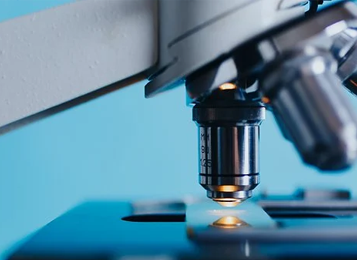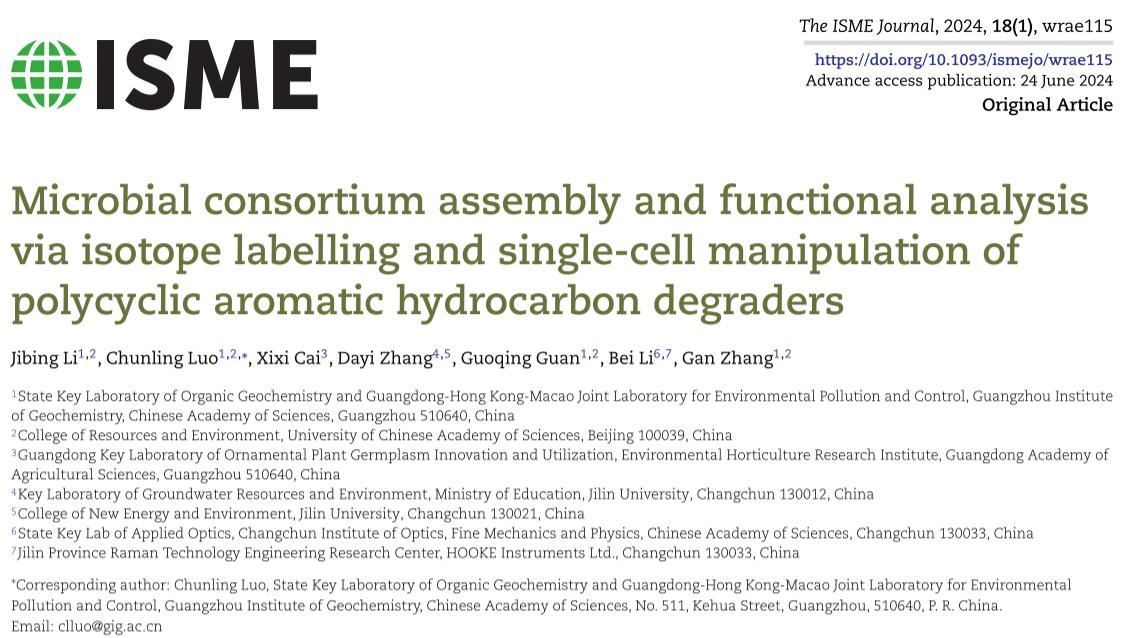

- Application Article
- Download
Hooke College

- About Us
- Team
- R & D and production
- Join Us
- Contact Us
- Qualification honor



On June 24, 2024, Luo Chunling and Li Jibing from the Guangzhou Institute of Geochemistry, Chinese Academy of Sciences, published a paper entitled "Microbial consortium assembly and functional analysis via isotope labeling and single cell manipulation of polycyclic aromatic hydrocarbon collectors" in The ISME Journal. The article used 13C isotope labeling combined with Raman active cell sorting to isolate and cultivate functional bacteria for in-situ degradation of phenanthrene in soil, and successfully constructed a synthetic microbial community for efficient phenanthrene degradation in situ; And the in situ mechanism of functional microbial communities was elucidated through genomic analysis. Among them, the core product of HOOKE INSTRUMENTS - PRECI SCS-R300 Raman Single Cell Sorter provides a convenient and efficient tool for identifying and sorting functional bacteria during the in-situ construction of functional microbial communities in the article.

Soil microbial flora constitutes a highly diverse and complex microbiome on Earth, often challenging to cultivation, with unclear metabolic mechanisms in situ. Here, we present a pioneering concept for the in situ construction of functional microbial consortia (FMCs) and introduce an innovative method for creating FMCs by utilizing phenanthrene as a model compound to elucidate their in situ biodegradation mechanisms. Our methodology involves single-cell identification, sorting, and culture of functional microorganisms, resulting in the formation of a precise in situ FMC. Through Raman-activated cell sorting-stable-isotope probing, we identified and isolated phenanthrene-degrading bacterial cells from Achromobacter sp. and Pseudomonas sp., achieving precise and controllable in situ consortia based on genome-guided cultivation. Our in situ FMC outperformed conventionally designed functional flora when tested in real soil, indicating its superior phenanthrene degradation capacity. We revealed that microorganisms with high degradation efficiency isolated through conventional methods may exhibit pollutant tolerance but lack actual degradation ability in natural environments. This finding highlights the potential to construct FMCs based on thorough elucidation of in situ functional degraders, thereby achieving sustained and efficient pollutant degradation. Single-cell sequencing linked degraders with their genes and metabolic pathways, providing insights regarding the construction of in situ FMCs. The consortium in situ comprising microorganisms with diverse phenanthrene metabolic pathways might offer distinct advantages for enhancing phenanthrene degradation efficiency, such as the division of labour and cooperation or communication among microbial species. Our approach underscores the importance of in situ, single-cell precision identification, isolation, and cultivation for comprehensive bacterial functional analysis and resource exploration, which can extend to investigate MFCs in archaea and fungi, clarifying FMC construction methods for element recycling and pollutant transformation in complex real-world ecosystems.
Keywords: in situ functional microbial consortia; Raman-activated cell sorting; genome-directed cultivation; single-cell genomic sequencing; soil phenanthrene-degrading bacteria; stable-isotope probing.
The paper links:
https://academic.oup.com/ismej/article/18/1/wrae115/7697972?login=false

+86-431-81077008

Building 3, Photoelectric Information Industrial Park, No.7691 Ziyou Road, Changchun, Jilin, P.R.C

marketing@hooke-instruments.com

COPYRIGHT©2022 HOOKE INSTRUMENTS LTD.ALL RIGHTS RESERVED 吉ICP备18001354号-1